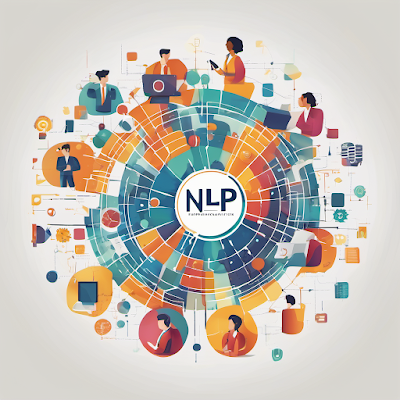In today's fast-paced digital era, effective communication is the key to success. One revolutionary technology making waves in this domain is Natural Language Processing (NLP). Let's delve into the intricacies of NLP, exploring its evolution, applications, challenges, and the exciting future it promises.
1. Introduction to NLP: Definition and Importance
Natural Language Processing, or NLP, is a branch of artificial intelligence that focuses on the interaction between computers and humans using natural language. It's the force behind language understanding, interpretation, and generation, playing a pivotal role in transforming the way we communicate.
2. The Evolution of Natural Language Processing: Historical Perspective
The journey of NLP traces back to the 1950s when scientists began exploring machine translation. Over the decades, breakthroughs like rule-based systems and statistical models paved the way for the sophisticated NLP we know today.
3. Core Concepts of NLP: Tokenization and Part-of-Speech Tagging, Named Entity Recognition
To understand NLP, one must grasp its core concepts. Tokenization breaks down text into meaningful units, while Part-of-Speech Tagging identifies grammatical elements. Named Entity Recognition extracts entities like names and locations, making sense of unstructured data.
4. Applications of NLP in Daily Life: Chatbots, Virtual Assistants, Sentiment Analysis
From chatbots providing instant customer support to virtual assistants simplifying tasks, NLP is seamlessly integrated into our daily lives. Sentiment analysis on social media helps businesses gauge public opinion, contributing to data-driven decision-making.
5. NLP in Business and Marketing: Personalization, SEO Optimization
Businesses leverage NLP for personalized customer experiences and enhanced engagement. In marketing, NLP aids in SEO optimization, ensuring content resonates with the target audience.
6. Challenges and Limitations of NLP: Ambiguity, Ethical Considerations
Despite its advancements, NLP faces challenges like ambiguity and ethical considerations. The nuanced nature of human language poses hurdles, and the ethical use of data is a growing concern.
7. Breakthroughs in NLP Technology: Transfer Learning, GPT-3
Recent breakthroughs include transfer learning, where models trained on one task excel in others. The advent of GPT-3 (Generative Pre-trained Transformer 3) marks a significant milestone, showcasing the potential of large-scale language models.
8. NLP in Healthcare: Diagnosis, Patient Interactions, Research
In healthcare, NLP aids in diagnosing diseases, improving patient interactions, and facilitating research through data analysis. The technology is a game-changer in the medical field.
9. The Future of NLP: Advancements, Predictions
As technology evolves, so does NLP. The future holds promises of even more sophisticated models, deeper language understanding, and seamless human-computer interactions.
10. How to Implement NLP Strategies: Tools, Best Practices
For businesses looking to harness the power of NLP, understanding the tools and adopting best practices is crucial. The implementation of NLP strategies requires careful planning and execution.
11. Success Stories of NLP Implementation: Real-world Examples
Real-world success stories highlight the impact of NLP across industries. From improved customer satisfaction to streamlined processes, NLP is a driving force behind numerous success stories.
12. NLP and Education: Language Learning, Automated Grading Systems
In education, NLP facilitates language learning, provides tutoring, and supports automated grading systems. It revolutionizes the learning experience for students and educators alike.
13. NLP in Content Creation: Writing Assistance, Content Optimization
Content creators benefit from NLP through writing assistance tools and content optimization. It streamlines the creative process and enhances the quality of written material.
14. NLP and Multilingual Communication: Bridging Language Gaps, Cultural Adaptation
Breaking language barriers, NLP fosters multilingual communication. It goes beyond translation, ensuring cultural adaptation and understanding.
15. Conclusion: Summary and Future Prospects
In conclusion, NLP has transformed communication on a global scale. From enhancing business strategies to revolutionizing healthcare and education, its applications are diverse and impactful. As we look ahead, the evolution of NLP promises even more exciting developments, reshaping the way we interact with technology.
Frequently Asked Questions:
How does NLP benefit businesses in terms of customer engagement?
- NLP personalizes customer experiences, ensuring businesses connect meaningfully with their audience.
What are the ethical considerations associated with NLP?
- NLP raises concerns about privacy, data security, and biased algorithms, prompting a need for ethical guidelines.
How can educators leverage NLP in the classroom?
- NLP supports language learning, tutoring, and automated grading systems, enhancing the education landscape.
Are there any limitations to NLP technology?
- Ambiguity in human language and ethical concerns are notable challenges faced by NLP technology.
What role does NLP play in content creation?
- NLP aids content creators through writing assistance tools and optimization, elevating the quality of content.


Comments
Post a Comment